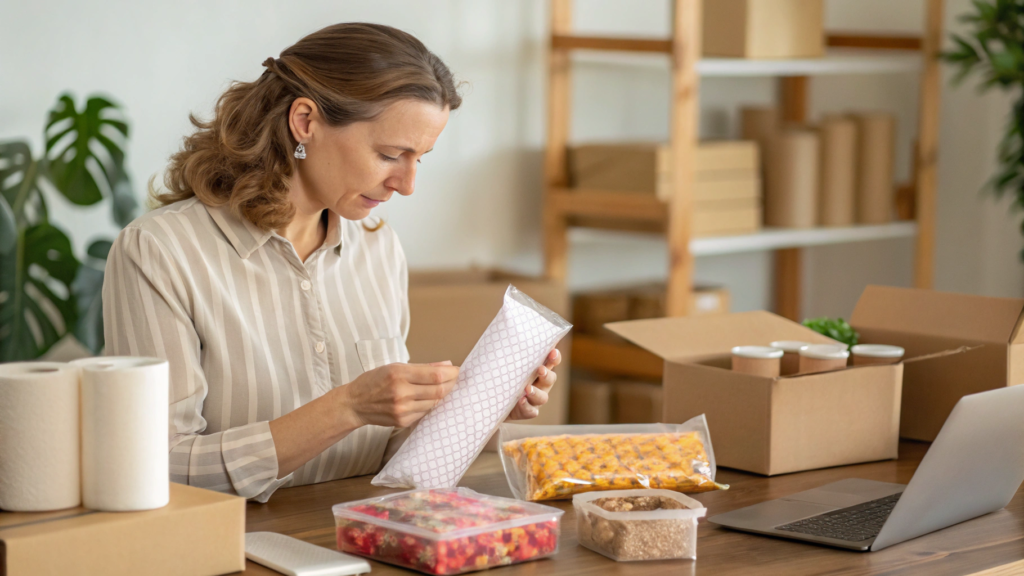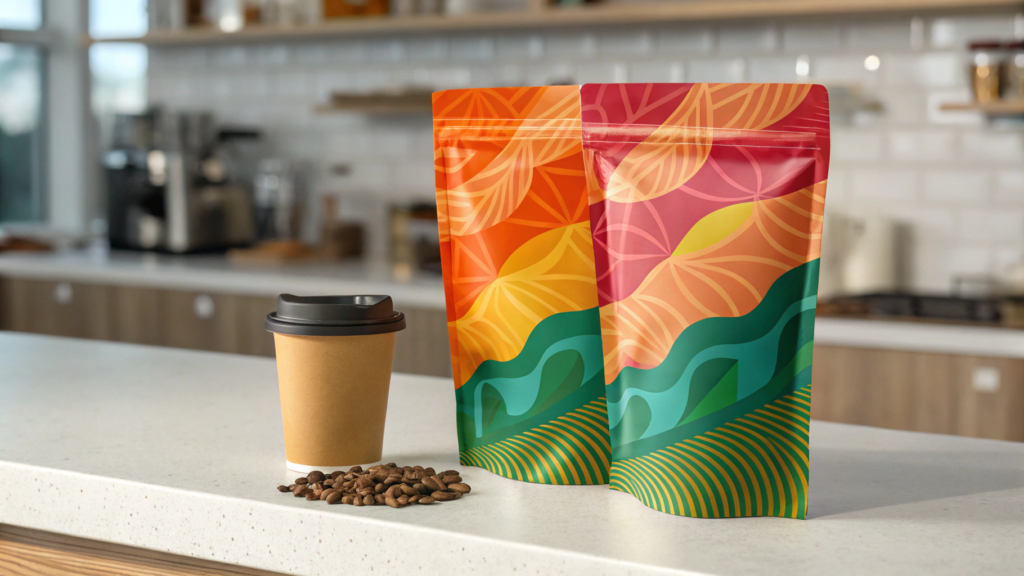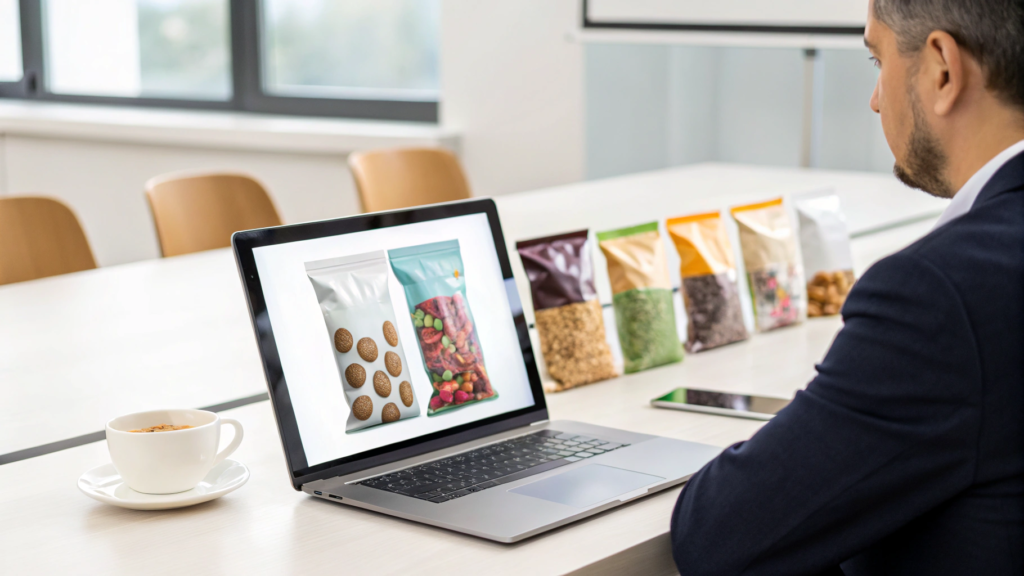
Choosing the right packaging material can be a game-changer for small businesses. It's about striking the right balance between cost, durability, and brand appeal.
Small businesses should choose packaging based on product type, fragility, and transportation needs. The right material ensures safety and reinforces the brand.
Understanding how to select the best packaging material is vital for a small business. Let’s explore what factors should guide this decision-making process.
What is Important When Deciding on Packaging for Products?
Choosing the right packaging requires considering factors like product fragility, transportation needs, and brand identity. It’s about ensuring product safety while staying within budget.
Consider the product’s fragility, size, and shipping conditions to determine the most suitable protective material.

When choosing the right packaging, several product characteristics must be considered. Let’s break them down.
Product Fragility
If the product is fragile, extra protection is needed. Fragile items like glass, electronics, or delicate collectibles require materials such as:
| Material | Protection | Example |
|---|---|---|
| Bubble Wrap | Shock absorption | Fragile electronics |
| Foam Inserts | Cushioning | Glass bottles |
| Corrugated Cardboard | Impact resistance | Fragile boxes |
These materials absorb impacts and prevent breakage during transit.
Transportation Needs
](#placeholder_6)Food PackagingFreshness retention
Long-distance shipping or rough handling calls for durable materials. Materials that withstand temperature fluctuations or handling conditions are crucial for products like food or cosmetics.
| Material | Use Case | Benefits |
|---|---|---|
| Laminated Films1 | International Shipping | Moisture protection |
| Strong Cardboard2 | Heavy-duty Transport | Structural strength |
| Vacuum Sealing3 | Food Packaging | Freshness retention |
This ensures products remain intact during their journey, reducing the risk of damage.
Brand Identity
Your packaging must also represent your brand. High-quality packaging reflects professionalism, while unique designs or eco-friendly materials appeal to conscious consumers.
What are the Characteristics of Good Packaging?
Good packaging does more than protect your product; it enhances its appeal, makes it easier to handle, and clearly communicates your brand’s message.
Good packaging should be durable, easy to handle, and reflect your brand. It must protect the product and be cost-effective.
Effective packaging goes beyond protection—it must be functional and align with your brand’s message. Let’s break down the key features of good packaging.
Durability and Protection
Your packaging needs to protect your product during transport, especially for delicate or perishable items. Materials like aluminum foil, bubble wrap, and vacuum-sealing films ensure safety.
| Material | Type | Protection Provided |
|---|---|---|
| Aluminum Foil | Barrier Material | Protection from air and moisture |
| Bubble Wrap | Cushioning Material | Prevents shocks and breakage |
| Vacuum-Sealing Films | Freshness Preservation | Keeps food fresh for longer |
Ease of Use
Packaging should be user-friendly. Easy-to-open, resealable, or eco-friendly materials are preferred. Customers appreciate packaging that’s simple and convenient.
| Feature | Benefit |
|---|---|
| Resealable Zipper | Keeps product fresh, reusable |
| Easy-tear Pouches | Convenient and mess-free |
| Tamper-evident Seals | Ensures product integrity |
These features improve the customer experience and encourage repeat business.
Brand Alignment
Packaging should communicate your brand’s personality. Whether you use premium materials for luxury goods or sustainable options for eco-friendly brands, your packaging conveys a message.
How Do We Choose the Right Packaging Material?
The right packaging material must protect the product, align with your brand, and meet your budget requirements. Let’s look at how to choose the most appropriate material.
Choosing the right material requires understanding your product’s needs and testing materials that offer protection, durability, and cost-effectiveness.

When selecting packaging, it’s crucial to balance function, cost, and appearance. Below are factors to consider:
Functionality
Does the material protect your product during shipping and storage? Ensure your material choice reflects the product’s fragility and transportation needs.
| Material | Protection Level | Use Case |
|---|---|---|
| Corrugated Cardboard | High | Fragile goods |
| Foam Inserts | High | Electronics |
| Paperboard | Moderate | Lightweight items |
Cost and Budget
While functionality is key, cost is equally important for small businesses. Find a balance between durability and cost.
| Material | Cost | Best for |
|---|---|---|
| Plastic Films | Low | Cost-effective options |
| Cardboard | Moderate | Durable and affordable |
| Custom Digital Prints | Higher | Unique designs, flexibility |
Digital printing allows for flexible designs on various materials without the high costs of traditional printing methods.
Sustainability
With growing customer demand for eco-friendly packaging, sustainability is becoming a major consideration. Choosing biodegradable or recyclable materials can enhance your brand image.
| Material | Sustainability | Advantages |
|---|---|---|
| Recycled Paper4 | High | Eco-friendly, recyclable |
| Biodegradable Plastics5 | Moderate | Breaks down naturally |
| Glass or Aluminum6 | High | Reusable, recyclable |
What are the Factors that Influence the Choice of Materials for Packaging?
Industry standards, customer preferences, and environmental considerations are key factors influencing the choice of packaging material.
Industry regulations, customer preferences, and the environmental impact of materials all influence the choice of packaging materials.
Several external factors affect your choice of packaging materials, including regulations, consumer preferences, and environmental impact.
Industry Standards
Some industries have strict guidelines for packaging. For example, the food and pharmaceutical industries require materials that meet safety and hygiene standards.
| Industry | Regulation Type | Packaging Requirements |
|---|---|---|
| Food and Beverages7 | Food Safety Standards | Non-toxic, moisture-proof packaging |
| Cosmetics and Pharma8 | Health and Safety | Tamper-proof and sterile packaging |
Consumer Preferences
As more consumers demand sustainable options, packaging made from recyclable or biodegradable materials is becoming increasingly popular.
Environmental Impact
Reducing the carbon footprint of packaging is becoming a key consideration. Using renewable resources, minimizing waste, and choosing recyclable materials can help your brand connect with eco-conscious consumers.
How to Find the Right Packaging for My Small Business?
Finding the right packaging material is a step-by-step process. By assessing your product and business needs, you can choose the material that works best for you.
Evaluate your product’s needs and business goals, then explore packaging options that align with them.

Finding the right packaging starts with understanding your product’s needs and your business priorities. Here’s how you can approach it:
Assess Your Product
Start by considering the product’s fragility, size, and transportation needs. Does your product need extra protection? Will it be transported long distances?
Research Packaging Options
Once you’ve assessed your product, research packaging options that meet your requirements. Get samples from suppliers to test and compare materials.
Consider Customer Expectations
Packaging is often a reflection of your brand. If your target market values sustainability, consider using eco-friendly materials. Consider your brand’s story and how it can be communicated through packaging.
Conclusion
Choosing the right packaging material is essential for small businesses. By considering product needs, customer preferences, and sustainability, you can make informed decisions that support your business and brand.
-
Learn about the moisture protection and durability of laminated films for packaging. ↩
-
Find out why strong cardboard is ideal for heavy-duty transport and structural strength. ↩
-
Learn how vacuum sealing helps maintain freshness during long-distance shipping. ↩
-
Learn about the environmental advantages of using recycled paper in packaging. ↩
-
Find out how biodegradable plastics help reduce waste and environmental harm. ↩
-
Learn how glass and aluminum are both reusable and recyclable, making them eco-friendly packaging options. ↩
-
Understand the packaging materials required to meet food safety regulations. ↩
-
Learn about the strict regulations for packaging cosmetics and pharmaceutical products. ↩

